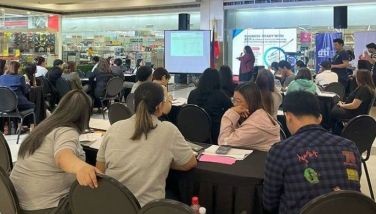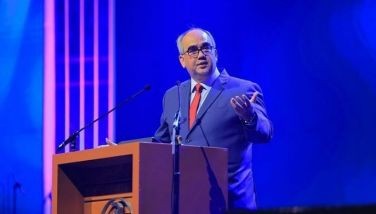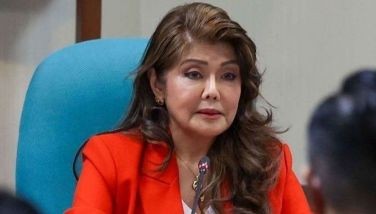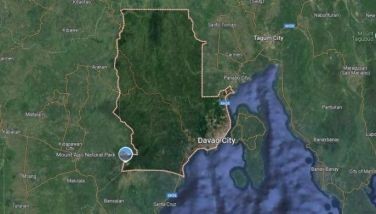IIF sees RP economy growing by 5.7% this year
January 23, 2007 | 12:00am
A renewed surge in domestic demand is expected to boost in the country’s gross domestic product (GDP) growth to 5.7 percent this year and over six percent in 2008.
Upgrading its previous projections, the Institute of International Finance (IIF) said in its latest country report that lower oil prices, falling interest rates and sustained remittances from overseas Filipino workers should support a "revival" in domestic demand in the next two years.
According to the IIF, the moderate growth in exports and an investment-led increase in imports are expected to narrow the trade gap.
However, the institute said OFW remittances would cushion the impact of the trade deficit and the fall in the current account surplus would be tamed to $3 billion, only slightly lower than the peak of over $4.5 billion in 2006.
Moreover, the IIF said the resumption of program and project lending from official creditors combined with the increase in private equity spending should raise the country’s gross international reserves to $28 billion by the end of 2008.
"Despite rising political uncertainty in the run-up to the May midterm elections, the strengthening of the public sector finances should help bolster financial market stability," the IIF said.
The IIF had originally projected real GDP growth to reach only five percent this year and the international reserves to go up to only $21 billion by the end of 2007, with foreign direct investments reaching $1 billion a year over the next two years.
The IIF said investments have been "languishing" in the last two years but the institute said they are "poised to turn up" with greater credit availability combined with the prospects of improving sales.
"The growth in domestic demand is set to lift the real GDP growth from 5.4 percent in 2006 to 5.7 percent in 2007 and 6.5 percent in 2008," the IIF said.
According to the institute, the strengthening of domestic demand is not likely to interrupt the downward trend in inflation either.
The appreciation of the peso, lower oil prices and the elimination of the base effect of the value-added tax rate hike should also reduce the average increase in consumer prices to less than four percent in 2007.
"Inflation is likely to stabilize at around four percent in 2008," the IIF said.
However, the IIF said the weakness in exports towards the end of 2006 should be extended into this year due to lower commodity prices and a softening in demand for semiconductors so that growth would slip from 13 percent in 2006 to six percent in 2007 before recovering to nine percent in 2008.
Upgrading its previous projections, the Institute of International Finance (IIF) said in its latest country report that lower oil prices, falling interest rates and sustained remittances from overseas Filipino workers should support a "revival" in domestic demand in the next two years.
According to the IIF, the moderate growth in exports and an investment-led increase in imports are expected to narrow the trade gap.
However, the institute said OFW remittances would cushion the impact of the trade deficit and the fall in the current account surplus would be tamed to $3 billion, only slightly lower than the peak of over $4.5 billion in 2006.
Moreover, the IIF said the resumption of program and project lending from official creditors combined with the increase in private equity spending should raise the country’s gross international reserves to $28 billion by the end of 2008.
"Despite rising political uncertainty in the run-up to the May midterm elections, the strengthening of the public sector finances should help bolster financial market stability," the IIF said.
The IIF had originally projected real GDP growth to reach only five percent this year and the international reserves to go up to only $21 billion by the end of 2007, with foreign direct investments reaching $1 billion a year over the next two years.
The IIF said investments have been "languishing" in the last two years but the institute said they are "poised to turn up" with greater credit availability combined with the prospects of improving sales.
"The growth in domestic demand is set to lift the real GDP growth from 5.4 percent in 2006 to 5.7 percent in 2007 and 6.5 percent in 2008," the IIF said.
According to the institute, the strengthening of domestic demand is not likely to interrupt the downward trend in inflation either.
The appreciation of the peso, lower oil prices and the elimination of the base effect of the value-added tax rate hike should also reduce the average increase in consumer prices to less than four percent in 2007.
"Inflation is likely to stabilize at around four percent in 2008," the IIF said.
However, the IIF said the weakness in exports towards the end of 2006 should be extended into this year due to lower commodity prices and a softening in demand for semiconductors so that growth would slip from 13 percent in 2006 to six percent in 2007 before recovering to nine percent in 2008.
BrandSpace Articles
<
>
- Latest
- Trending
Trending
Latest
Trending
Latest
Recommended





























